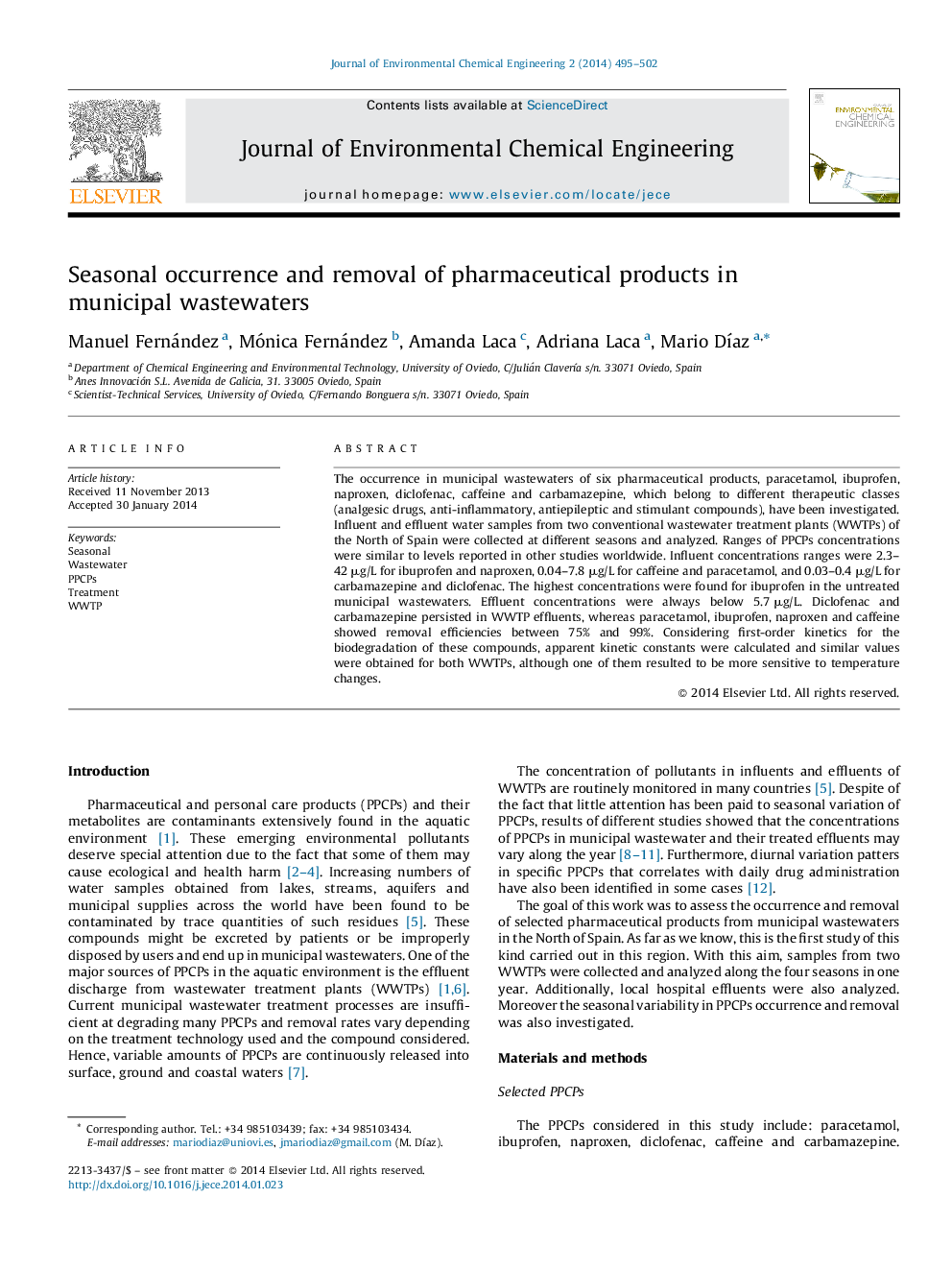| Article ID | Journal | Published Year | Pages | File Type |
|---|---|---|---|---|
| 222165 | Journal of Environmental Chemical Engineering | 2014 | 8 Pages |
The occurrence in municipal wastewaters of six pharmaceutical products, paracetamol, ibuprofen, naproxen, diclofenac, caffeine and carbamazepine, which belong to different therapeutic classes (analgesic drugs, anti-inflammatory, antiepileptic and stimulant compounds), have been investigated. Influent and effluent water samples from two conventional wastewater treatment plants (WWTPs) of the North of Spain were collected at different seasons and analyzed. Ranges of PPCPs concentrations were similar to levels reported in other studies worldwide. Influent concentrations ranges were 2.3–42 μg/L for ibuprofen and naproxen, 0.04–7.8 μg/L for caffeine and paracetamol, and 0.03–0.4 μg/L for carbamazepine and diclofenac. The highest concentrations were found for ibuprofen in the untreated municipal wastewaters. Effluent concentrations were always below 5.7 μg/L. Diclofenac and carbamazepine persisted in WWTP effluents, whereas paracetamol, ibuprofen, naproxen and caffeine showed removal efficiencies between 75% and 99%. Considering first-order kinetics for the biodegradation of these compounds, apparent kinetic constants were calculated and similar values were obtained for both WWTPs, although one of them resulted to be more sensitive to temperature changes.
